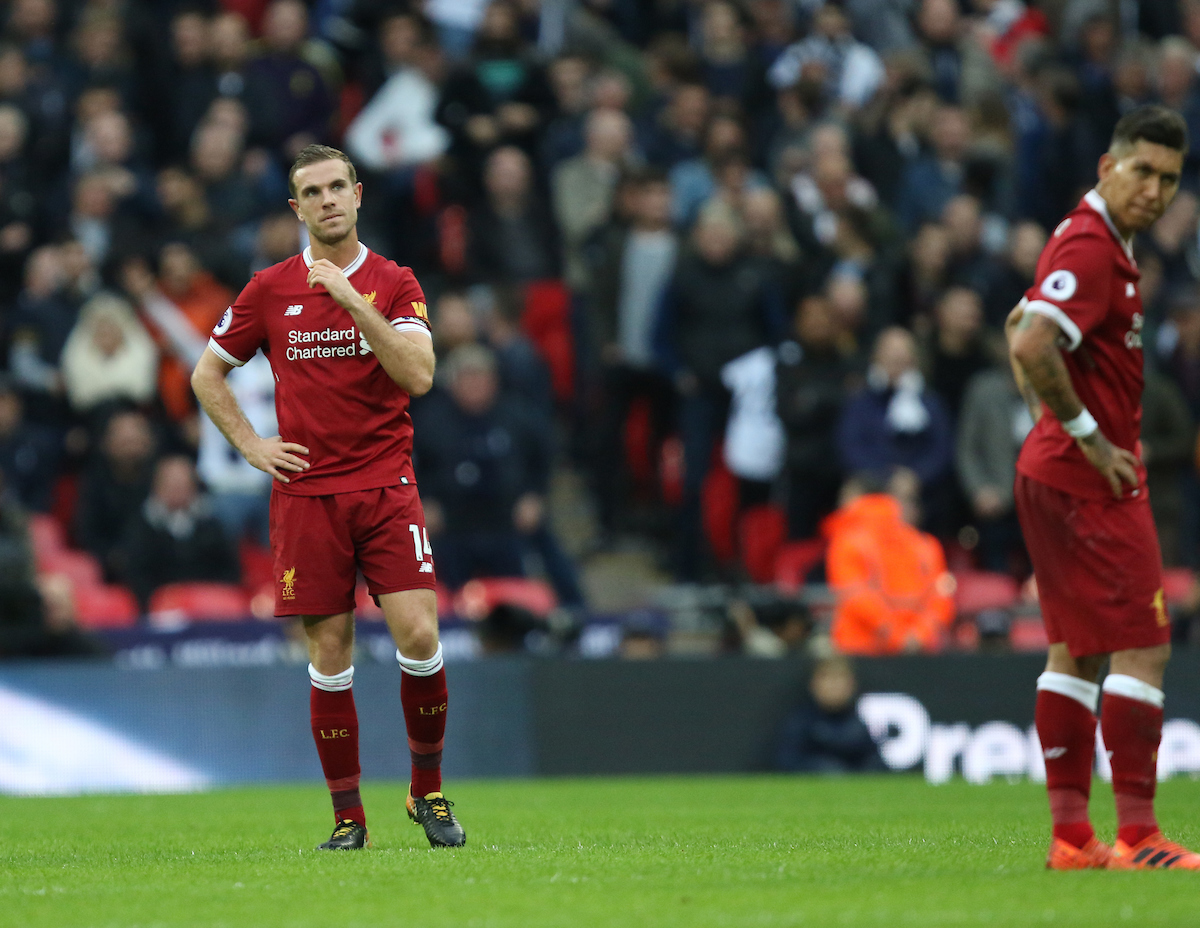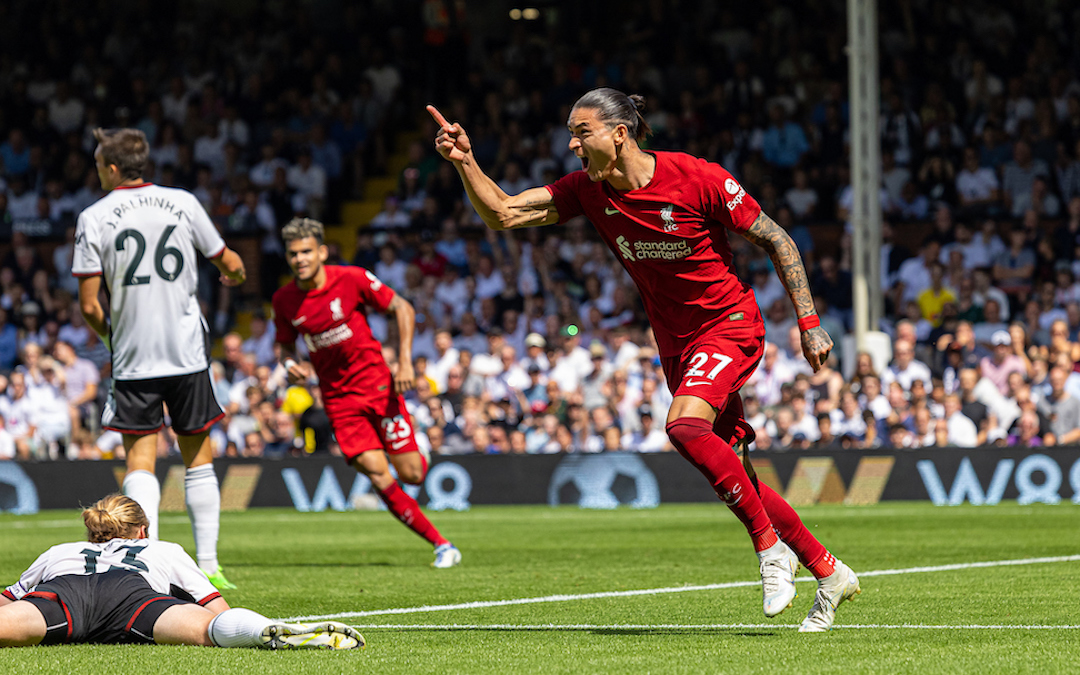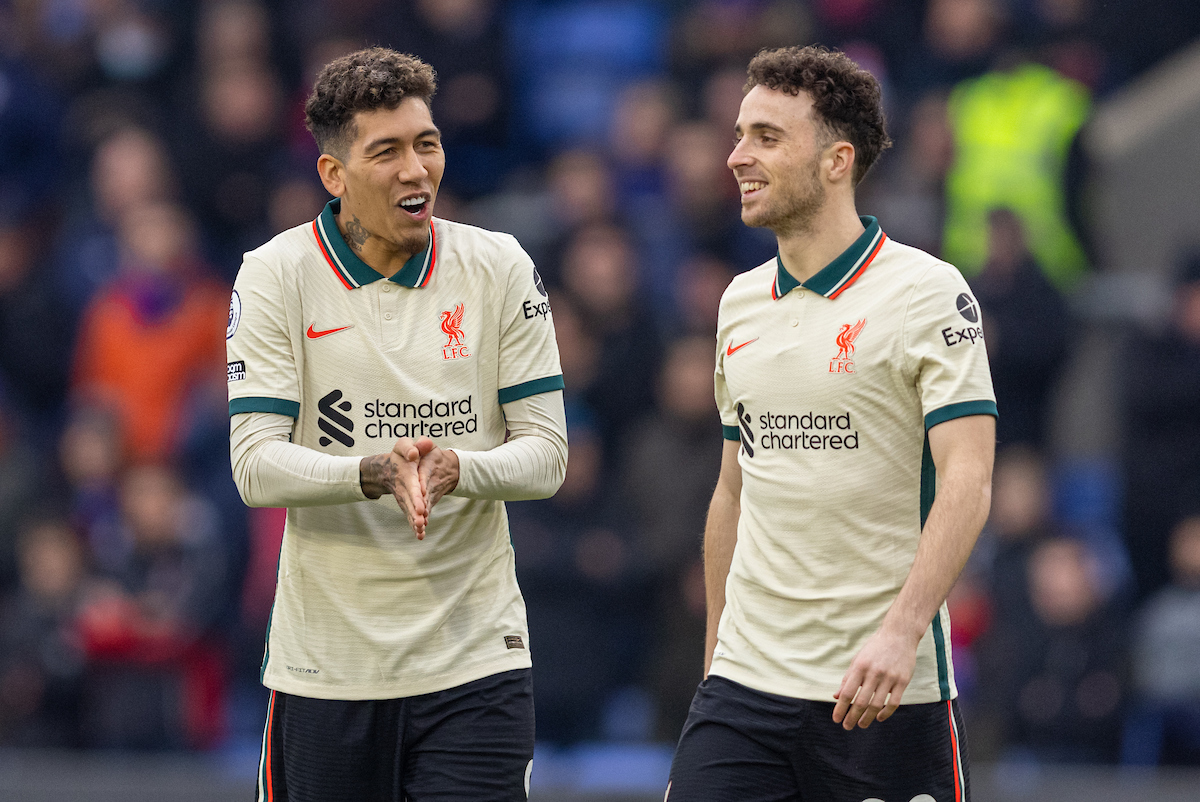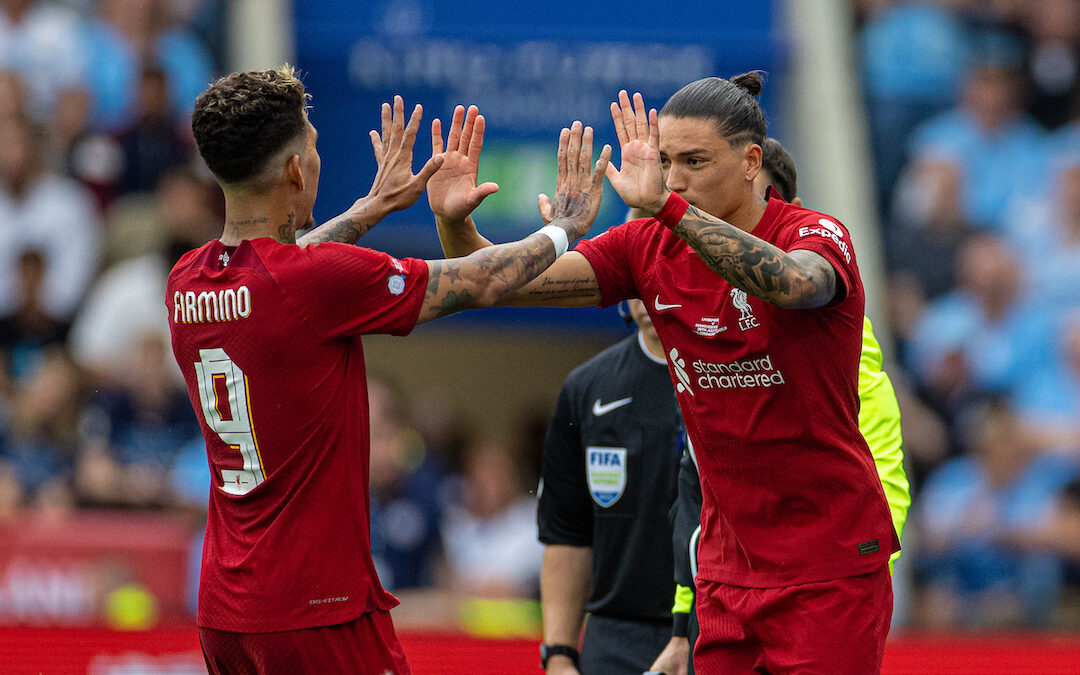Considering the merits of Darwin Nunez, Roberto Firmino and Diogo Jota, is there only one man for the job of being Liverpool’s centre forward?
SINCE 2016, Liverpool have had an interesting relationship with the centre-forward position.
While the Premier League rumbled on with the same old, same old, the Sergio Agueros, the Diego Costas and the Harry Kanes, Jurgen Klopp was conducting a new experiment within the four stands of Anfield.
Signed during the collapse of Brendan Rodgers’ reign but identified by the so-called ‘transfer committee’, Roberto Firmino came to define the opening years of Klopp’s gung-ho gegenpressing, before the system was refined into a more possession-heavy, full-back orientated, points-gobbling machine.
An epitomic false nine, the popular Brazilian bucked the league’s traditional trend of marquee goal scorers, acting as a flair-driven facilitator for the other two thirds of Liverpool’s era-defining front three, with flicks and tricks as dazzling as his iconic veneers.
“Firmino is the most complete striker in the league,” gushed Thierry Henry. But four years on from these comments, Liverpool’s number nine has arguably been demoted from a starting berth to the lowest rung of favourability when Reds worldwide pick their ideal 11s before Jurgen’s published choices set the lineup in stone.
There is, it must be said, no shame in that. Revolution consumes everything; Liverpool and football in general are no exception.
Remember that pivotal 4-1 defeat at the hands of Tottenham in 2017? Though it came in Firmino’s best season for the club, in some ways it began a chain of events that have led to his diminished involvement on the pitch.

After the loss, Klopp began to play a riskier game with the position of his full-backs, allowing Trent Alexander-Arnold to become the dominant creative force he now is.
Firmino was a player with more energy back then, unjaded by years of aggressive defending from the front. He was sparky enough to set up the play before bursting into the box. A personal best 27 goals and 17 assists that season confirmed such abilities.
His ineffective turn against Fulham was in diametric opposition to the all-encompassing threat of his previous years. Fulham rarely dropped too deep, instead squeezing the space in front of the penalty area, compressing Firmino’s zone of operation. When Liverpool went more direct, it was to wider areas, with Fulham’s full-backs keeping that situation in hand.
Bursting beyond the line has never been Firmino’s strength, you might say (you would be right), but here we must consider the restless nature of football. Liverpool’s change under Klopp has always been gradual, never radical, but obvious in hindsight.
When we signed Thiago Alcantara, for example, it was to remedy a diagnosed lack of central creativity, a change which has since been effected. There is a similar movement occurring at centre-forward.
The pace of the wider game’s progress was explicitly visible in microcosm at Craven Cottage, as Firmino was withdrawn and Darwin Nunez introduced. To say someone changed the shape of the game is an overused cliché, but such a transformation occurred very literally in the second half.
Before the Uruguayan’s introduction, the arrangement of players was blocky, cubic. After, it was stretched and disorganised, the marauding Nunez repeatedly powering up the gut of the previously settled Fulham backline.

Liverpool’s long balls became an effective weapon as Nunez’s pace widened the margin for passing error and stretched out the compact setup of the opposition. Look at the body language of the retreating Fulham defenders in the seconds preceding both goals. Panic. Pure panic.
Darwin has become the most recent illustration on the evolutionary chart, succeeding the position from the injured Diogo Jota. Jota stands as an intermediary figure between the opposites of Nunez and Firmino, not a bonafide striker though a player with focal point potential and a spawny, gritty streak – a quintessentially Portuguese operator.
A new contract suggests that he is still firmly in Klopp’s plans, although the tendency to use Sadio Mane as his central striker at the climax of the last campaign weakened Jota’s grip on the position.
So, then, if Firmino is still in residence of Klopp’s frontal lobe, Jota is regarded as a significant part of the club’s future, and Nunez’s impact is unignorable (all of which are true), how does the power struggle for this prestige position get resolved?
Is it horses for courses or one man for the job? Our opinions and the manager’s, on this issue, may be misaligned owing to the disparity of information quantity available to he and us, but the conclusion is probably the same – a diplomatic compromise.
The agreement that Nunez must start against Crystal Palace on Monday night is surely unanimous, and a good performance will secure a run of games for him, at least until Jota returns and the Wednesday-Saturday schedule offers rotational opportunities to the supporting cast.
Nunez also has the ability to play off the left, presumably operating as a domineering wide-target man on a beleaguered full-back, but his abilities seem best suited to the centre and a discussion of this option is an article in itself.

Firmino’s chances have not completely dissipated. A return to his former levels is unlikely, but he remains a perfect situational player.
On The Anfield Wrap’s free podcast, Rob Gutmann discussed using him primarily off the bench as a gegenpressing disruptor, harnessing his energy for finite sections of the second half rather than burning him out before the clock has hit 30 minutes.
If he can cut inconsistencies in possession from his game, his inventiveness in limited space is, on paper, the key to unlocking stubborn, deep defences.
There is no one solution for each player. It will be a balancing act and there are a multitude of factors to consider before the lineup is finalised pre-game, every game.
The unfolding of this debate, the problems and solutions that arrive, and the continual evolution of each striker’s place within an ever-changing environment will be fascinating to see.
The decisions that are made in this regard are ones that could shape Liverpool’s destiny this season.












With the midfield ‘crisis’ at the moment it would be quite simple to drop Firmino back to his old attacking midfielder role (pre-Liverpool) to make up the numbers.
Surely this would make for a devastating attacking 4-some, which was flirted with when Jota initially joined, but was quickly lost when he picked up an injury shortly into the season.